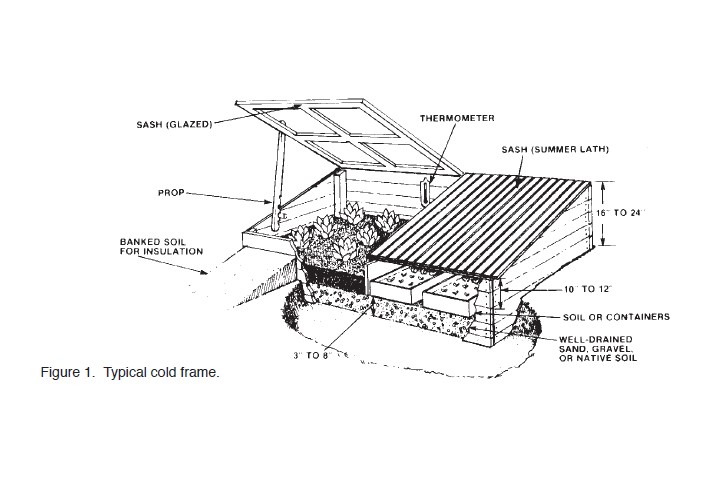I recently wrote that starting seeds indoors is one way to get a head start on growing vegetables or annual flowers. Another way to get a head start is by using hotbeds or cold frames. These structures can be built by homeowners, and they eliminate the need for indoor grow lights, space, and other equipment in the house. Hotbeds and cold frames are most commonly used for vegetables. They can also be utilized to extend the growing season in the fall.
Michael Dana, Professor of Horticulture, and Rosie Lerner, Consumer Horticulture Specialist (retired), wrote a fairly timeless publication on hotbeds and cold frames. I’ll use some excerpts from the publication in this article.
“Gardeners find it advantageous to have vigorous, stocky plants ready to plant out as soon as weather conditions permit,” they said. “Earliness is a particularly important factor for cool-season vegetables such as cabbage, cauliflower, lettuce, and spinach.”
Hotbeds and cold frames are essentially the same structure, with hotbeds having a source of heat. The 12-24” high structures typically have a sloping roof, topped with a hinged sash. The sash can be an old multiple-pane window frame, Plexiglas, Fiberglass, polyethylene, or other translucent/transparent material. Structures with two or more inside sections offer options for ventilation for vegetables with different growing requirements. “It should have full exposure to the sun, with a southern orientation preferred,” they said. “Painting the inside surfaces white or silver will help maximize the light level for the plants.”
“The framework of the bed can be constructed from wood, concrete, or concrete block,” they said. “When wood is used, the boards maybe 1, or preferably 2, inches thick.” Use treated wood, redwood, or cedar to prevent rotting.
Hotbeds can be either a pit hotbed, electric hotbed, or flue-heated hotbed. See the publication for specific suggestions regarding heat sources.
“Plants grow best with a limited amount of water and with controlled temperatures,” they said. “Apply water, preferably warm, during the morning when the sun is shining.” Over-watering and high temperatures encourage trouble from diseases and can cause spindly growth.
“Proper ventilation of hotbeds and cold frames not only controls temperature but also helps prevent damping-off disease,” they said. “When ventilating the bed, raise the sash opposite the direction of the wind.” As spring progresses, gradually raise or leave the sash off more and more each day, and eventually leave it off entirely – first all day, then all day and all night. “This will ‘harden off’ the plants in preparation for transplanting to the garden,” they said.
Find Dana and Lerner’s publication, “Hotbeds and Cold Frames,” at Purdue’s Education Store: www.edustore.purdue.edu.
